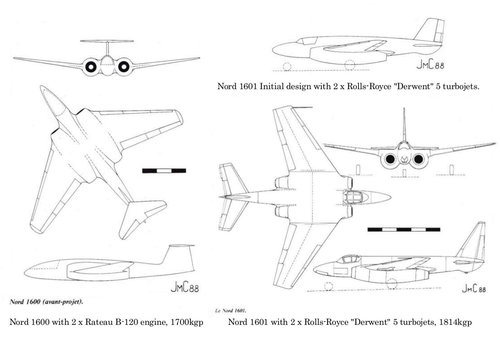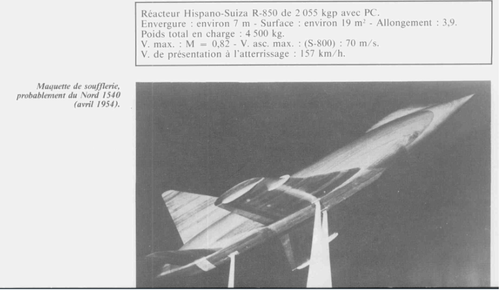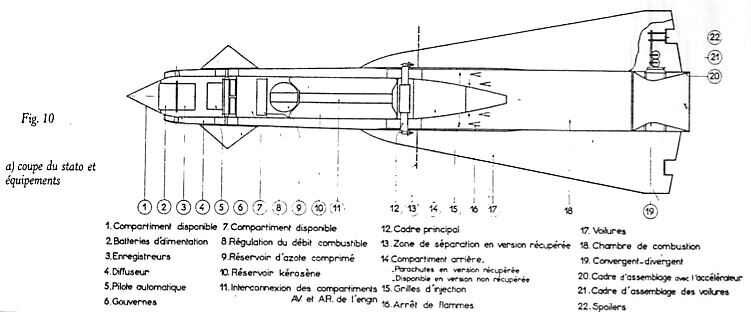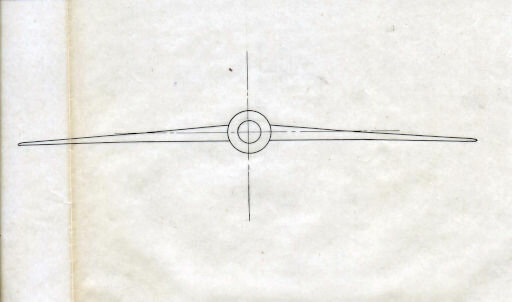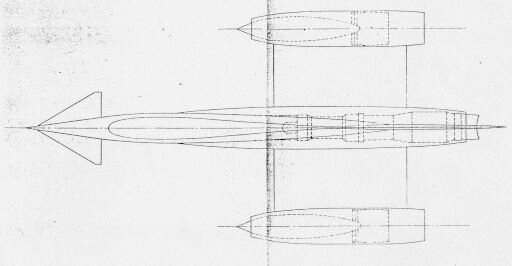blackkite
Don't laugh, don't cry, don't even curse, but.....
- Joined
- 31 May 2007
- Messages
- 8,784
- Reaction score
- 7,585
Hi!
"During July 1945 Nord launched the study of a jet aircraft N. 1600 under the direction of Louis Coroller. This arrow-shaped twin-engine was officially ordered in duplicate on January 27, 1947 (contract no. 5324/46). The two aircraft should have received Rateau B-120 reactors (SRA-1 of approximately 1700kgp) in two spindles attached to the fuselage, at mid-height. The empennage was then provided in T shape. (stabilizer mounted at the top of the fin).
The French reactors were made to wait and then proved too heavy. Endorsements to the market, in 1949 and 1950, liquidated these two prototypes by replacing them with a single N. 1601 with two Derwent V turbojet engines from Rolls-Royce (1587kgp)."
Source : LES AVIONS DE COMBAT FRANCAIS 1944-1960 Ⅱ-CHASSE LOURDE, BOMBARDEMENT, ASSAUT, EXPLORATION, Jean CUNY Introduction du General Pierre M.GALLOIS,
DOCAVIA EDITIONS LARIVIERE 30.
http://www.aviastar.org/air/france/nord_1601.php
"Under the designation Nord 1601, Nord designed a single-seat twin turbojet-powered aircraft to investigate the aerodynamic capability and efficiency of swept wings and related high-lift devices. A cantilever mid-wing monoplane with 33° of sweepback on the wing leading edges, the N 1601 had a wing incorporating ailerons, spoilers, leading-edge slats and trailing-edge flaps. The configuration included swept tail surfaces, and there were retractable tricycle landing gear and two 1814kg thrust Rolls-Royce Derwent 5 turbojet engines in underslung wing-mounted nacelles on each side of the fuselage. The pilot was accommodated on a Martin-Baker ejector seat in a cockpit enclosed by a jettisonable canopy. The aircraft was first flown on 24 January 1950, and the research programme of the 12.46m span N 1601, which had a maximum speed of 1000km/h and a ceiling of 12000m, provided valuable design information."
Specification
"During July 1945 Nord launched the study of a jet aircraft N. 1600 under the direction of Louis Coroller. This arrow-shaped twin-engine was officially ordered in duplicate on January 27, 1947 (contract no. 5324/46). The two aircraft should have received Rateau B-120 reactors (SRA-1 of approximately 1700kgp) in two spindles attached to the fuselage, at mid-height. The empennage was then provided in T shape. (stabilizer mounted at the top of the fin).
The French reactors were made to wait and then proved too heavy. Endorsements to the market, in 1949 and 1950, liquidated these two prototypes by replacing them with a single N. 1601 with two Derwent V turbojet engines from Rolls-Royce (1587kgp)."
Source : LES AVIONS DE COMBAT FRANCAIS 1944-1960 Ⅱ-CHASSE LOURDE, BOMBARDEMENT, ASSAUT, EXPLORATION, Jean CUNY Introduction du General Pierre M.GALLOIS,
DOCAVIA EDITIONS LARIVIERE 30.
http://www.aviastar.org/air/france/nord_1601.php
"Under the designation Nord 1601, Nord designed a single-seat twin turbojet-powered aircraft to investigate the aerodynamic capability and efficiency of swept wings and related high-lift devices. A cantilever mid-wing monoplane with 33° of sweepback on the wing leading edges, the N 1601 had a wing incorporating ailerons, spoilers, leading-edge slats and trailing-edge flaps. The configuration included swept tail surfaces, and there were retractable tricycle landing gear and two 1814kg thrust Rolls-Royce Derwent 5 turbojet engines in underslung wing-mounted nacelles on each side of the fuselage. The pilot was accommodated on a Martin-Baker ejector seat in a cockpit enclosed by a jettisonable canopy. The aircraft was first flown on 24 January 1950, and the research programme of the 12.46m span N 1601, which had a maximum speed of 1000km/h and a ceiling of 12000m, provided valuable design information."
Specification
MODEL | Nord 1601 | |
ENGINE | 2 x Rolls-Royce "Derwent" 5 turbojets, 1814kg | |
DIMENSIONS | ||
Wingspan | 12.46 m | 41 ft 11 in |
PERFORMANCE | ||
Max. speed | 1000 km/h | 621 mph |
Ceiling | 12000 m | 39350 ft |
Attachments
Last edited:

